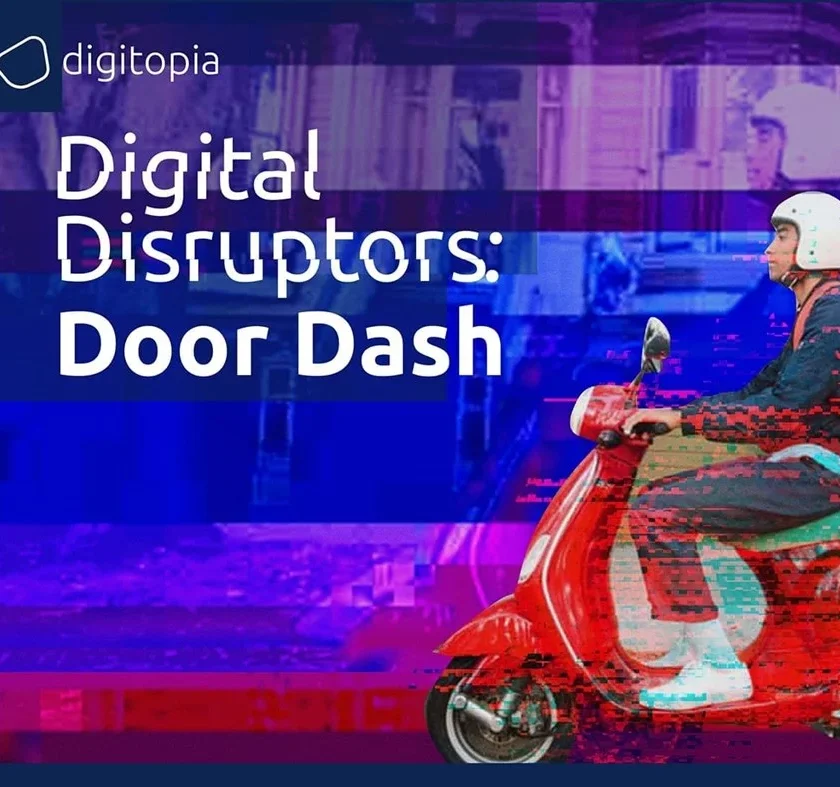
Whatever You Need, Delivered in Minutes
The pandemic has changed the way people eat. 79% of DoorDash customers have reported that they had ordered pickup at least twice in April 2021, and 56% ordered delivery at least twice in the same month. America’s most popular food delivery platform was allowed to thrive.
Now, DoorDash will attempt to beat Amazon at its own game; delivery. Valued at $28 billion in 2020, DoorDash is twice as large as one of its biggest competitors, Uber Eats. Founder Tony Xu‘s vision of building “the local, on-demand FedEx” is backed by investors Fidelity and T. Rowe Price.
What’s the Big Deal?
The company wants accomplish “the delivery of everything”. DoorDash has recently partnered with Sam’s Club for medications, Walgreens and CVS for groceries, and BevMo for alcohol delivery. To become an all-inclusive platform, the company created a new business model called “DoorDash Drive”, which allows any merchant to enter the platform and utilize DoorDash’s logistics fleet.
This strategic expansion actually comes from Amazon’s playbook to become the best at one business line. In Amazon’s case, they first began as a book distributor, then expanding into the adjacent markets. To become the best at food delivery, DoorDash heavily invested in its analytical capabilities to run a data-driven start-up. The company has two to three times more data roles than its competitors’ full-stack teams, revealing Door Dash’s self-explanatory competitive edge.
The Core Disruption
Just like any other platform, DoorDash maintains a 3-sided marketplace which means three stakeholders to delight: Merchants, customers, and the couriers called “Dashers”. The company has dedicated teams to continuously and iteratively improve the relevant party’s experience. Moreover, the company is taking an active stance on its stakeholders’ problems.
After the Black Lives Matter protests, DoorDash created a $500,000 fund to assist groups across the country dedicated to youth development, economic empowerment and community organization. And during the pandemic, the company opened ghost kitchens in select cities, where chefs can prepare food without the costs of running a traditional restaurant.
To determine the true needs and values of the customers, DoorDash really needs to know its customer to the core. And that is only achievable through its data platform. The company makes every improvement and decision based on its platform’s analytics.
DoorDash has lifted its conversion rate from search to checkout by 25% through a restaurant recommendation system, so not every consumer can see every store. On the Dashers end, DoorDash uses machine learning to forecast demand taking into account traffic, weather, routes, availability, and supply of Dashers to maximize Dasher utilization. And the company helps merchants with forecasting demand, price optimization and labor utilization.
This customer experience and digital capabilities are solidified with a foundational operational strategy. DoorDash has a mantra to “get 1% better every day.” To execute on this mantra, the company developed an “operational playbook” to launch, run and scale their local markets. DoorDash has a team of “Launchers” that work with all three sides of the platform to roll out a new market: Recruit the restaurants, launch marketing campaigns to acquire customers, and onboard Dashers.
The Digital Superpowers:
Design: DoorDash experiments across the food delivery lifecycle through its platform — ad images, menu presentation and pick-up time for Dashers by market, down to the single minute depending on weekday and time of the day to design the best experience possible.
Connectivity: DoorDash is heavily investing in drone and autonomous technologies to create a fleet of connected vehicles that will make delivery faster and contactless.
Speed: DoorDash is becoming a near-instant delivery system for mom-and-pop stores that offers anything from coffee to gasoline.
Intelligence: DoorDash uses machine learning to prioritize the restaurants they choose to partner with by tapping into customer trends and favorites.
Lessons Learned
Companies do not have to be the first one in the market to become the leader. As one of the latest, DoorDash successfully dominates the food delivery industry and is now eyeing to capture all the localized logistics market. To achieve that, the company took the true value of data to its heart and leveraged it to create a pleasant experience for all the relevant stakeholders in its ecosystem.

